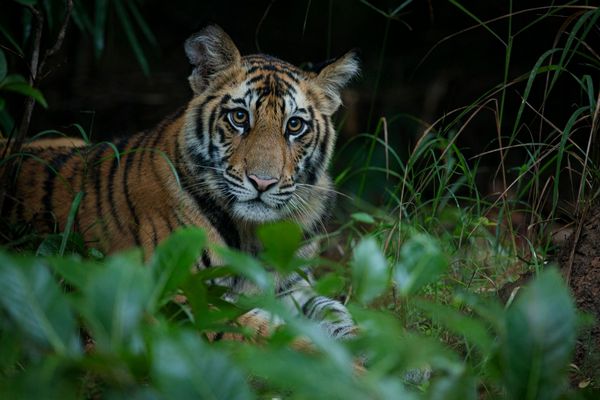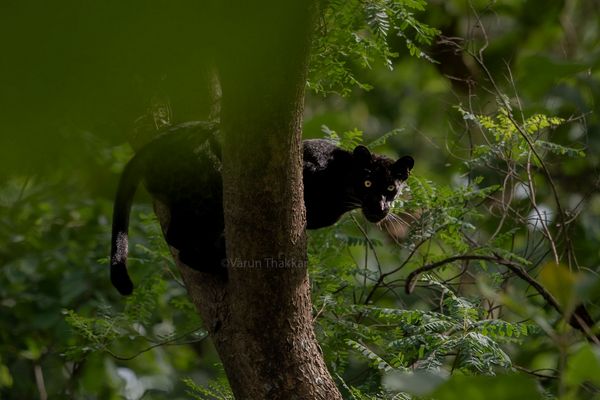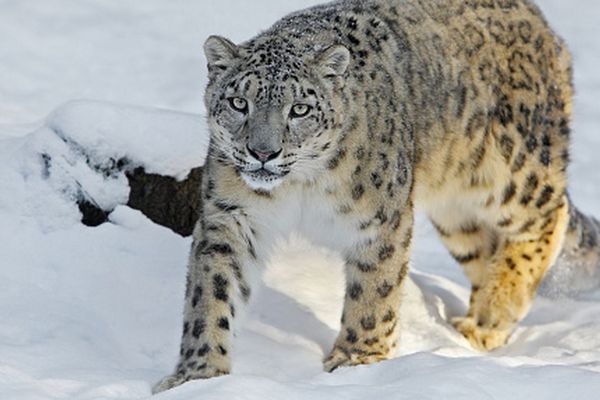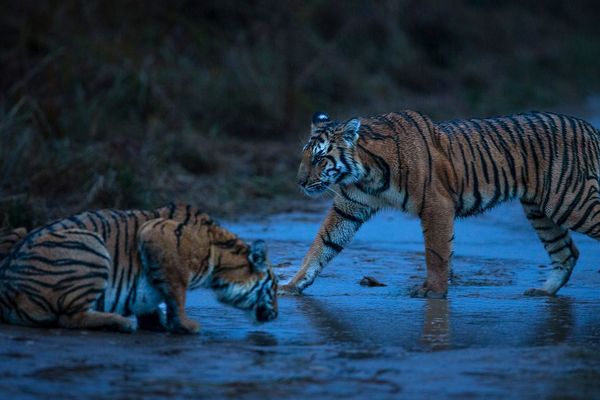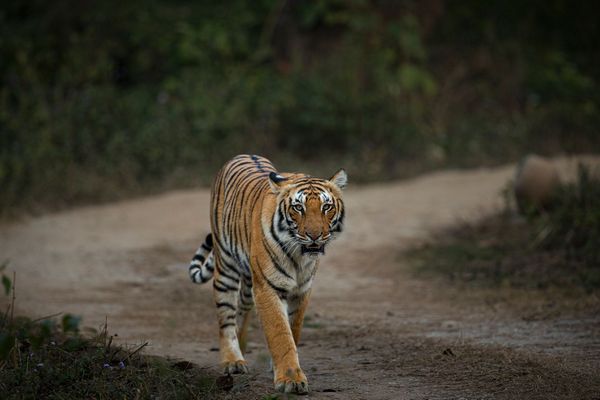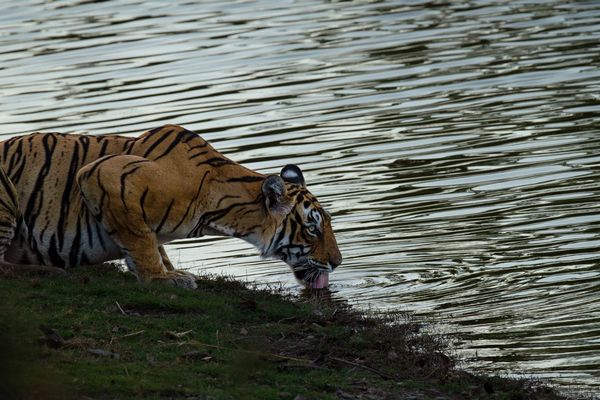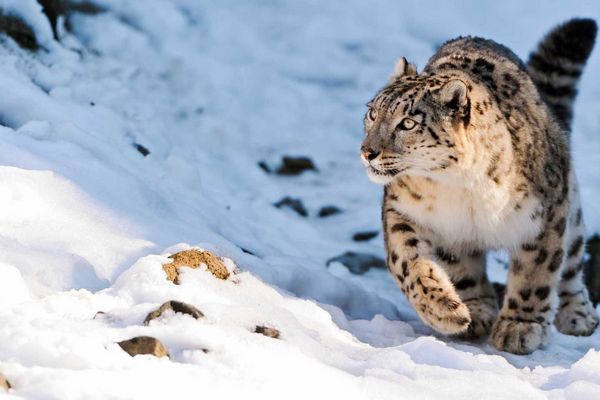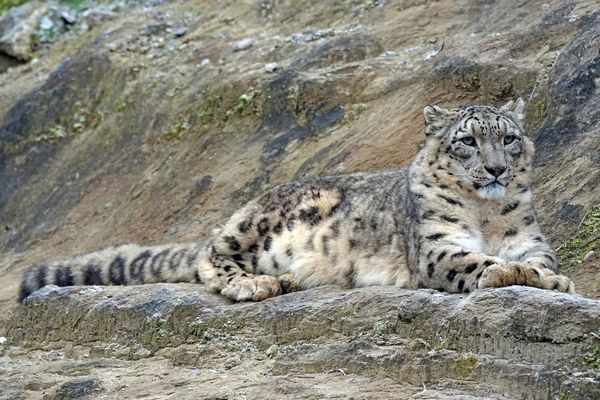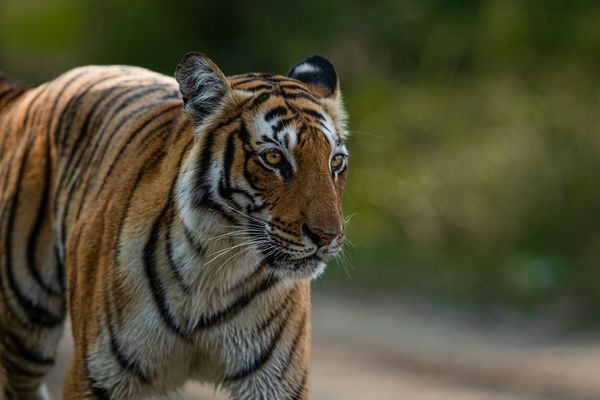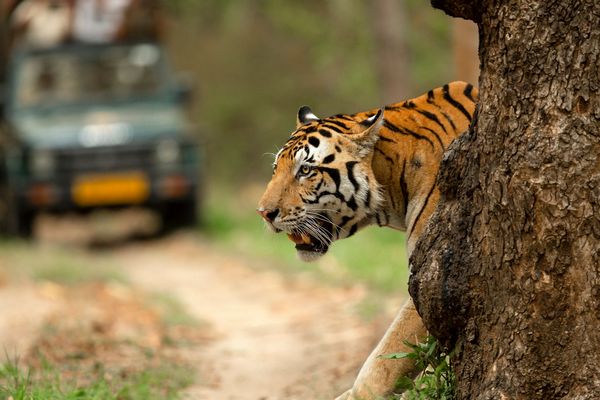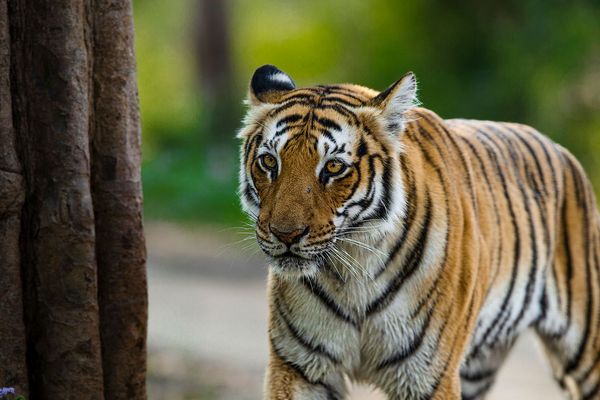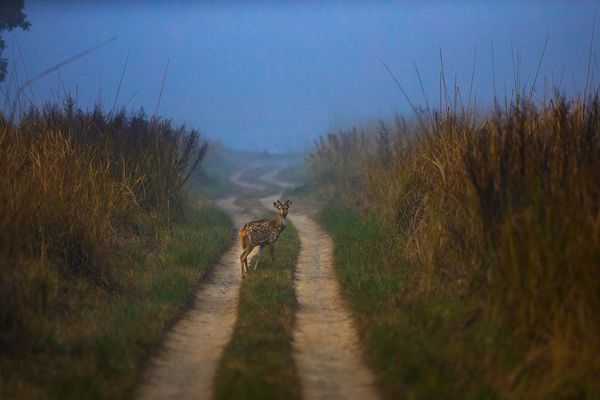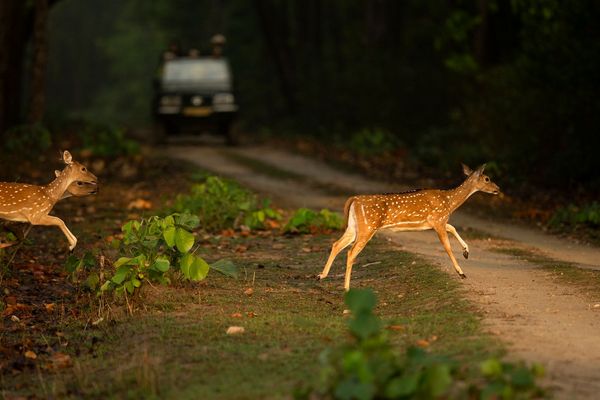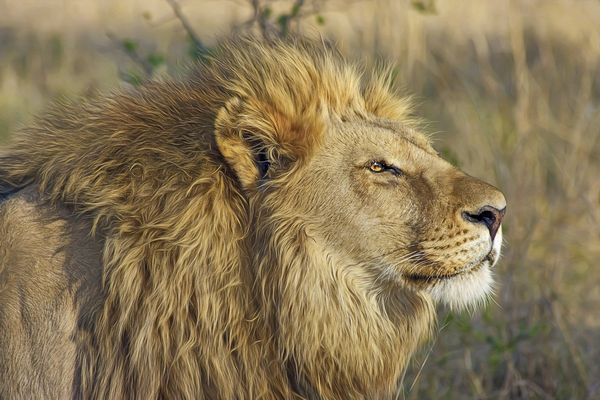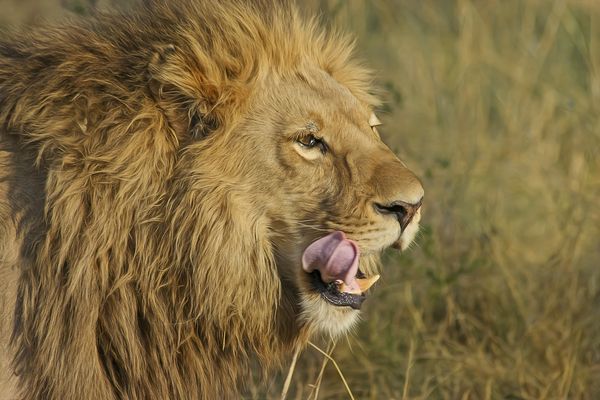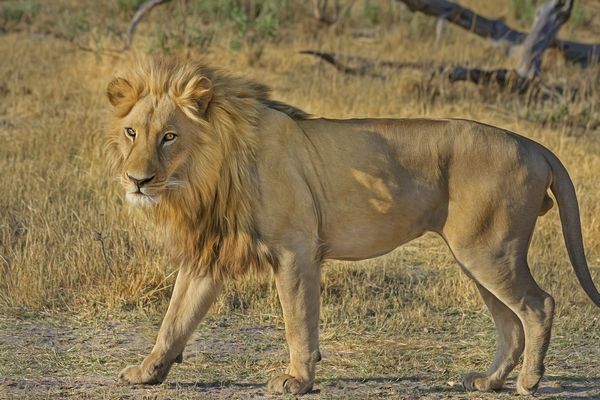Outline Tour Itinerary
- Day 01 : Arrival in New Delhi
- Day 02 : New Delhi – Leh (Flight)
- Day 03 : Leh
- Day 04 : Leh – Ulley ( 77 km, 3 – 4 hrs drive)
- Day 05 - 10 : Ulley
- Day 11 : Ulley – Leh – New Delhi ( 77 km, 3-4 hrs drive + flight)
- Day 12 : New Delhi – Ranthambhore (390 km, 07 hrs drive)
- Day 13 - 15 : In Ranthambore National Park
- Day 16 : Ranthambhore – Jaipur (180 km, 4 hrs drive)
- Day 17 : Jaipur – Bera (390 km, 07 hrs drive)
- Day 18 - 19 : Bera
- Day 20 : Bera – Ahmedabad (280 km, 5-6 hrs drive)
- Day 21 : Ahmedabad – Sasan Gir (350 km, 7 hrs drive)
- Day 22 - 23 : Sasan Gir
- Day 24 : Sasan Gir – Rajkot – New Delhi (180 km, 04 hrs drive + Flight)
- Day 25 : New Delhi – Fly Home
Guest Testimonials
Big Cats in India Tour
India is the only country in the world that is home to all four of the big cats found in the wild: tigers, asian lions, snow leopards, and Indian leopards are all celebrated there. These stunning creatures require no introduction. The Big Cats of India Tour is an exciting journey that travels around Northern India to witness some of the most formidable beasts that have ever graced our planet. The tour includes both a tiger safari and a leopard safari as part of its itinerary.
As you travel through some of the most breathtaking scenery that our country has to offer, we will make sure that everything on your list is taken care of, whether it be the royal stripes or the covert rosettes. You will have the opportunity to witness the majestic Lion, the legendary Tiger, the graceful Leopard, and of course, the elusive Snow Leopard as you go from the scrub forests of Gir National Park to the snow-covered vastness of the spellbinding Himalayas. This trip of a lifetime will provide you the opportunity to see some of the rarest and most coveted animals in the planet, and it will have your heart racing for what feels like weeks on end.
Get a Quote
Let’s plan a perfect tiger safari tour for you. Please fill in the details and our representative will get in touch with you within 12 hours with a custom-made tiger safari tour package. You can also reach us directly on +91-9811200094 or email us at [email protected].
Big Cats of India Tour Detailed Itinerary
- Day 1: Arrival in New Delhi
Upon arrival at the New Delhi Airport, you will be met by our representative. He will ensure a smooth transfer to the Hotel and further, help you check-in at the Hotel. All the travel related documents will be handed over and explained to you. Overnight stay at the Hotel.
- Day 2: New Delhi – Leh (Flight)
After breakfast on day one, you will be driven to the airport to catch flight G8 225 at 8:40 in the morning. Your destination is Leh. You will be greeted by a representative of our company when you arrive at the airport in Leh, and they will take you to the hotel. When travelling from Delhi to Leh, you will swiftly ascend in altitude by 3,000 metres, which means that you will need the most degree of acclimatisation of anyone visiting in this region. We will spend the night in the hotel in Leh.
- Day 3 : Leh
After breakfast that morning, take a drive along the Indus river in search of waders, dippers, and other birds like as ibisbills, harriers, and ducks. Take in some of the attractions of Leh, popularly known as Little Tibet due to the abundance of Tibetan culture that can be seen there, throughout the afternoon. The Shanti Stupa, the Leh Palace, and Namgyal Tsemo are among the most well-known places of interest for visitors to Leh. We will spend the night in the hotel in Leh.
- Day 4 : Leh – Ulley ( 77 km, 3 – 4 hrs drive)
Travel to Ulley, which is located in the western part of Ladhak and is home to the snow leopards, after breakfast. Ulley is in the Tibetan Plateau. On the road to Ulley, you will travel through the world’s largest creation, the Himalayas, where you will stop for a tea break in Nimoo and have the opportunity to see Likir Monastry. The fact that this monastery is perched atop a teeny, small hill in the middle of a valley makes it one of the most picturesque locations. After that, you should head to Ulley. Once you’ve arrived, check in at the hotel. The lodge at Ulley provided both dinner and lodging for the night.
- Day 5 : Ulley
Your routines for the foreseeable future will, thereafter, be determined by the movements of the snow leopard around the region. During the course of the day, you will either be hiking or camping, and this will be determined by the movements of the Ghost Cat. You are free to depart the lodge at any time during the early morning hours after breakfast in order to begin your quest for a Snow Leopard. The breathtaking scenery of the gigantic cliffs, which provide the perfect environment for a snow leopard, can be seen from the resort. The scan is initiated with the usage of a scope. You could have the chance to see a snow leopard, wolves, ibex, and other wildlife without even leaving the lodge if you’re lucky enough. In the event that an opportunity does not present itself, a spotter will already be on duty hunting for a snow leopard at a higher height, which is a journey that takes approximately two to three hours to complete on foot. Your potter will be present to provide assistance with the camera as well as any other pieces of equipment you may require. Spend the day moving about the area and looking for different kinds of life that are able to survive in such harsh conditions. The resort in Ulley provided all meals and accommodations for the night.
- Day 6 - 8 : Ulley
Your actions are wholly contingent on how the Snow Leopard is behaving at this moment. The search for the Ghost Cat will get underway at the resort in the wee hours of the morning. After breakfast, if you don’t have any luck in the region near the resort, you can do the climb to Sangpo Nala, which is around an hour long. The region has a long history of producing breathtaking sightings, and its success rate is far higher than that of other regions. During the course of the day, you will search the cliffs for the Snow Leopard. Because of the extremely high wind speeds and the vapor-carrying winds that pass through the region, the trans Himalayas are devoid of precipitation throughout the year.
Taking the tour here has many benefits, but one of those benefits is that every member will tell you something interesting about a snow leopard. Even if a resident of the village spots a snow leopard, we will still find out about it and travel to the area where it was spotted. The resort in Ulley provided all meals and accommodations for the night.
- Day 9 - 10 : Ulley
There are several alternative spots close by, such as the communities of Saspoche and Hemis Shukpachen, which you might try if you have already spotted a Snow Leopard or if your search has been fruitless so far. In addition, there have been several reports of wolves and snow leopards being spotted in and around these two towns. A wolf pack with anything from 5 to 8 individuals is known to frequent the area between these two communities. These regions have been incorporated into their home turf. During hikes and searches for the Snow Leopard in the Trans-Himalayas, you might also come across other species such as the Asiatic Ibex, Himalayan Thar, Blue Sheep, Marmot, Red Fox, Eurasian Lynx, Tibeten Wolf, Palla’s Cat, and a great many others. The Asiatic Ibex is able to blend in with its surroundings thanks to its coat, which has a greyish appearance with a bluish cast. The resort in Ulley provided all meals and accommodations for the night.
- Day 11 : Ulley – Leh – New Delhi ( 77 km, 3-4 hrs drive + flight)
With the wonderful memories of Snow capped mountains after breakfast check out from the lodge and transfer to Leh to board a flight SG 124 at 1220 hrs reaches Delhi at 1340 hrs. On arrival our representative will meet you at the airport and help you transfer to the hotel. Overnight at the hotel in New Delhi.
- Day 12 : New Delhi – Ranthambhore (390 km, 07 hrs drive)
Morning after early breakfast our representative/driver will meet you at the hotel and help you get transfer to Ranthambhore National Park 390 km, takes around 07 hours of drive. On arrival check-in to the lodge. Evening leisure time, dinner and overnight at the lodge in Ranthambhore.
- Day 13: Ranthambore National Park
Getting ready for the Tiger Safari in Ranthambhore should be your first order of business in the morning, well before daybreak. You will get in your vehicle and drive to the park entrance, where you will arrive well before daybreak to begin your morning safari.
The animals at Ranthambore National Park are used to the attention they receive, making it one of the best parks to visit if you want to observe wild animals near the intersection of the Aravali and Vindhya hill ranges. Ranthambhore National Park encompasses a total area of 400 square kilometres, and when the Sawai Man Sing Sanctuary is factored in, the total area expands to around 500 square kilometres. The name “Ranthambhore” was derived from the thousand-year-old stronghold that overlooks the forest and encompasses the steep hill crests that tumble to wide valleys in between the Aravalli and Vindhya ranges. The fortress is the source of the park’s name. The sides of these valleys are dotted with ponds and orchards of fruit trees. Ranthambhore, a region that is well-known for the sightings of tigers, is a very special place since it is at the intersection of natural and historical worlds. Languor, sambar, cheetal, chinkara, and nilgai. Tigers and leopards, both of which are notoriously difficult to spot, call this reserve home. Visitors who go on safari here have a very good chance of sighting tigers. When you get back from the safari, it should be around 10 in the morning. Lunch will be served at the lodge, and in the afternoon, you will go on a Jungle Safari to look for the magnificent tiger. The lodge in Ranthambhore provided both dinner and lodging for the night.
- Day 14 - 15 : Ranthambore National Park
A vehicle safari within of the National Park both in the morning and in the afternoon. The Ranthambhore lodge provided all meals and overnight accommodations for guests.
Within the confines of just one park, you may have all of the viewpoints, lighting, backdrops, and countless various frames. Ranthambhore is also known as a paradise for bird watchers because it is home to around 300 different species of birds. In point of fact, bird watchers will find Ranthambhore and its surrounding areas to be a veritable paradise. From their breeding grounds to the north of the Himalayas, large cormorants, painted spurfowls, sarus cranes, bronzed winged jacanas, sandpipers, kingfishers, nightjars, painted sandgrouses, great horned owls, and many other regular winter migrants travel to Ranthambhore and the areas surrounding it.
- Day 16 : Ranthambhore – Jaipur (180 km, 4 hrs drive)
Morning jeep safari inside the National Park. After lunch check from the lodge and transfer to Jaipur. Jaipur will be a place to break down the travel to Bera. Overnight at the hotel in Jaipur.
- Day 17 : Jaipur – Bera (390 km, 07 hrs drive)
Check out of the hotel after an early breakfast, and the travel to Bera, which is around 390 kilometres long and takes approximately seven hours, will begin. When you get there, check in at the lodge. The Jawai Dam may be found very close to the city of Bera in Rajasthan. It is well-known for the incredible leopard sightings that may be had there. You won’t be in a forest, but rather you’ll be in a sandy town, and you might see leopards there. This is a one-of-a-kind event. The fact that Bera is home to a variety of mammals and birds makes it a popular destination for people who are interested in wildlife. Visitors to Bera may have the opportunity to see animals such as the elusive leopard, the mighty bluebull, the crocodile, the ever-so-mischievous hyena, the graceful pelican, the Greylag Goose, Robin Accentor, Demoiselle Crane, and Barheaded Goose, to name just a few. A safari in the late evening will be waiting for you, and you will just be sharing the area with leopards. Dinner followed by a safari-themed overnight stay in the hotel.
- Day 18 - 19 : Bera
In the early hours of the morning, you will begin your safari in time to see the golden dawn over Rajasthan, which occurs when the sun rises over this dry region. The leopard is the primary reason people come to this location. However, it is also home to various types of animals, and the marsh crocodiles that live there are one of the main attractions here. What kind of actors are they; 15-foot giants who are capable of fooling anyone with their sleepy lies? It’s possible that even when they’re not doing anything, they still have the same amount of energy that they do when they’re hunting. Because they are immobile, we need to keep a sharp eye out for them because they can easily blend in with the rusty and muddy terrain that is located next to the reservoir. They bask in the sun for the entirety of the day, and when they become hungry, they simply plunge into the lake where there are plenty of fish to eat. Because of this, spotting them when they are in motion can be challenging, but when you are resting on the beach on a bright day, it is impossible to miss them.
The jeep safari will start once more in the afternoon. The Bera lodge provided all meals and a place to stay for the night.
- Day 20 : Bera – Ahmedabad (280 km, 5-6 hrs drive)
The morning arrived, and it was time for our final jeep safari in Bera. The landscape of Bera, which is characterised by boulders, is something that will stay with you for a long time. After checking out later, you will be sent to Ahmedabad, which is around 280 kilometres away and will take approximately five to six hours to drive. Once again, Ahmedabad serves as a travel break halt on the way to Sasan Gir, which is home to the Asiatic Lion. Please check in at the hotel upon arrival. Spend the night in the hotel that’s located in Ahmedabad.
- Day 21 : Ahmedabad – Sasan Gir (350 km, 7 hrs drive)Day 21 : Ahmedabad – Sasan Gir (350 km, 7 hrs drive)
After an early or packed breakfast check-out from the hotel and transfer to Gir National Park 350 km, which takes around 07 hours of drive. On arrival check in to the lodge. Afternoon proceeds for a jeep safari. Dinner and overnight at the lodge in Gir.
- Day 22 : Sasan Gir National Park
A vehicle safari within of the National Park both in the morning and in the afternoon. The guides are from the area, so they have a wealth of information to share about the parks. When one is familiar with the territory of a certain Lion, they are able to determine in which region to search for that particular Lion. Since the day they were born, they have been exposed to these lions. Gir National Park is the only place in the world other than Africa where visitors can see lions roaming freely in their natural environment. The average length of a Gir lion is 2.75 metres, and it has larger tail tassels, elbow tufts, and pronounced belly folds than its African cousins, which have thicker manes. These characteristics make the Gir lion one of the most beautiful animals in the world. In addition to lions, the Gir forest is home to 38 other species of mammals and over 350 different kinds of birds. This is also a region that is home to approximately one thousand big cats, which can be found both inside and outside of the National Park. According to the most recent information available, Sasan Gir is home to approximately 500 lions and the same number of leopards.
The Gir lodge provided all meals and a place to stay for the night.
- Day 23 : Sasan Gir National Park
A jeep safari around the National park both in the morning and in the afternoon. The Gir lodge provided all meals and a place to stay for the night. The Gir National Park and Sanctuary, which is located in the Saurashtra area of Gujarat, is responsible for preserving the nation’s largest continuous tract of dry deciduous forest. It spans a total area of 1412 square kilometres in its entirety. Gir has evolved to host a very stable ecosystem with an incredible capacity for regenerating, self-supporting, and self-sustaining itself due to its abundance of biodiversity, which includes 606 different plant species, 39 species of mammals, 37 species of reptiles, over 300 species of birds, and more than 2,000 species of insects.
The Gir avifauna, which is home to numerous raptor species as well as numerous important species such as the Lesser Florican, Osprey, Indian Pitta, and Red-headed Vulture, amongst others, serves as a breeding location for migrating birds and is home to numerous raptor species. In addition, it is home to a diverse collection of reptiles, such as Indian pythons, Indian star tortoises, and Marsh crocodiles, which make up one of the nation’s largest populations of the respective species.
- Day 24 : Sasan Gir – Rajkot – New Delhi (180 km, 04 hrs drive + Flight)
Morning jeep safari inside the National Park. After lunch check out from the lodge and transfer to Rajkot airport to board a flight at 1930 hrs to New Delhi. On arrival at the airport, our representative will meet you at the airport and transfer you to the hotel. Overnight at the hotel in New Delhi.
- Day 25 : New Delhi – Fly Home
The morning after relaxed breakfast, check out from the hotel and transfer to the international airport to board a flight home or onwards journey.
Enquire This Tour
Let’s plan your tiger safari tour. Please fill in the requirements below and our representative will get back to you with a custom safari package.
Guest Testimonials
What our guests are saying about us?

My husband and I did a 10 day "Just Tigers" safari. We visited Pench, Kanha and Bandhavgarh reserves. It was not high season but yes we had wonderful tiger sightings. The level of profession of these lovely people was so refreshing. For this type of trip you do want people who know what they are doing and a comfortable place to return to after long safari drives.

India. A country that has fascinated me for years. I finally decided it was time to visit and see it for myself. My husband and I both love nature, wildlife and birds so when I came across Nature Safari India I decided to make enquires.
We wanted to do the golden triangle tour as well as visiting national parks and seeing some of the ‘real’ India.

This is the 2nd time we have travelled with Nature Safari India. We had a 17 night holiday, visiting the nature of Sasan Gir National Park, Little Rann of Kutch, Velavadar Black Buck National Park and Leopard Hills at Bera. The nature was interspersed with various amounts of culture along the way. We had another amazing tour, with some stunning accommodation selected by the company

This was our second tiger safari at Corbett with Nature Safari and turned out to be worth every penny. We saw 7 tigers in 3 days and from quite close distance too. The best part was seeing a tigress wit her 2 grown cubs who crossed our path and walked in front of us for several minutes before crossing over and heading to a water hole where we saw them for hours drinking


